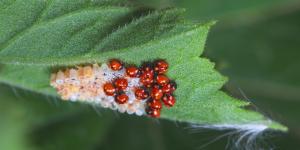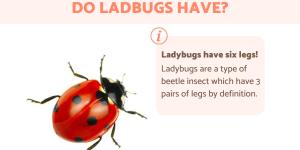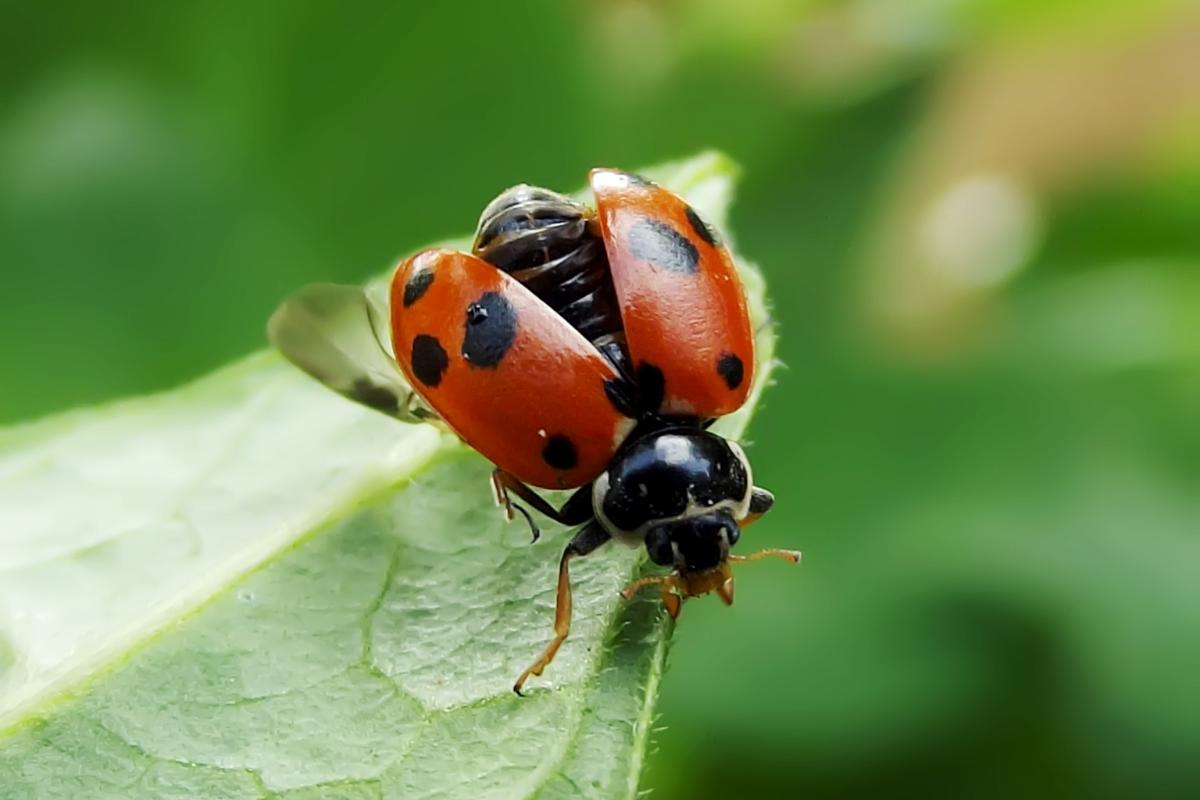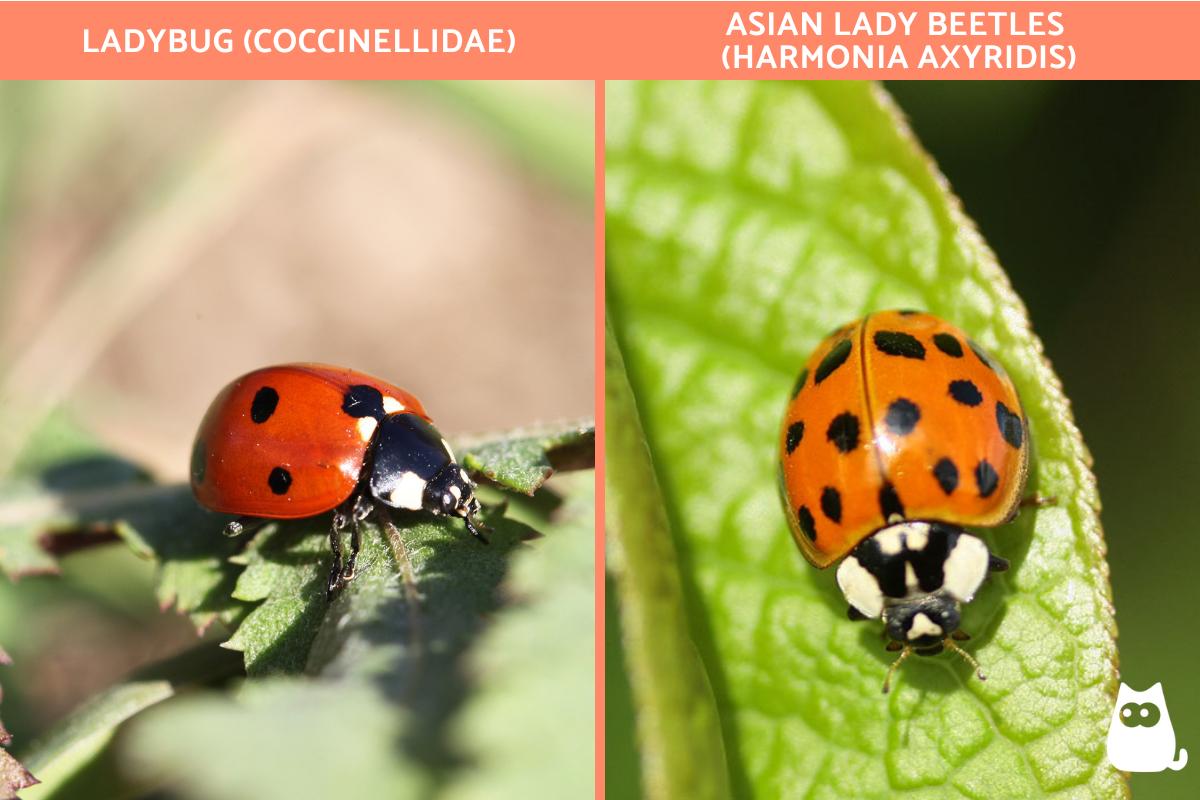Do Ladybugs Bite?

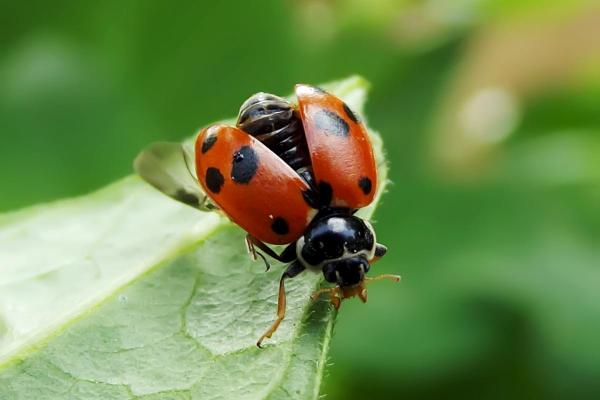
Ever had one of those cute, spotted ladybugs land on your finger and wondered if it could bite? The short answer is yes, but don't worry. While ladybugs do have tiny mouthparts capable of biting, they rarely break human skin and aren't interested in us as food. Their mandibles are designed for munching on garden pests like aphids, not people. That said, there's an important distinction between our native ladybugs and the introduced Asian lady beetles, which are more likely to pinch skin and release irritating defensive fluids.
This AnimalWised article will answer the question of whether ladybugs bite, and explore their defense mechanisms and other interesting facts.
Do ladybugs sting or bite?
Ladybugs don't sting, and while they technically can bite humans, it's quite rare and virtually harmless.
Ladybugs have specialized mouthparts designed primarily for hunting. Their small mouth parts are perfect for grasping and chewing soft-bodied insects, making them extremely effective against garden pests like aphids, scales, and mites. While they're called "biting" mouthparts, they're quite small and weak compared to insects that actually bite humans, which is why they rarely cause any discomfort.
Do ladybugs have teeth?
Ladybugs don't have teeth in the way humans or many animals do but, as mentioned, they do have specialized mouthparts that serve a similar function for their needs. Their primary feeding structures are called mandibles, which are paired jaw-like structures that move side-to-side rather than up and down.
What is the difference between a ladybug and a regular bug?
If you're wondering how a ladybug bite compares to other insects, the difference is substantial. Ladybug "bites" rarely break human skin and don't inject saliva, venom, or disease-causing pathogens like mosquitoes or ticks do. This means no itchy welts or painful reactions typically occur. In fact, most people never even notice if a ladybug attempts to bite them, as their mouthparts aren't designed to penetrate human skin effectively.
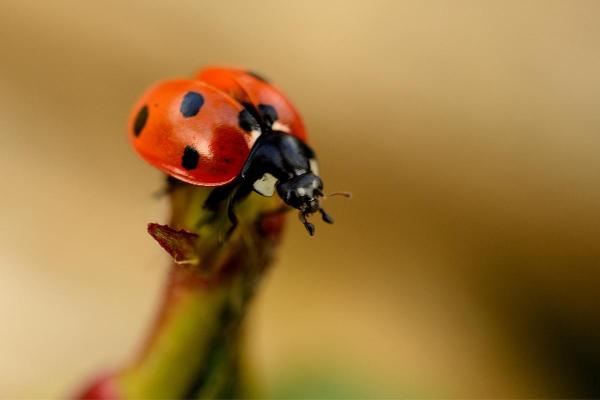
What does a ladybug eat?
Ladybugs are well-known for their love of aphids, which are their main food source in the wild. A single ladybug can eat thousands of these tiny pests over its lifetime, making them incredibly valuable for gardeners and farmers. They also enjoy other small, soft insects like scale insects, mites, whiteflies, mealybugs, and insect eggs.
When their favorite prey is hard to find, ladybugs are surprisingly adaptable. They can switch to eating plant-based foods like pollen, nectar, and fungi. Some species have even been seen feeding on plant sap or honeydew, the sweet liquid left behind by aphids. This ability to eat a variety of foods helps them stay alive when their usual meals are scarce.
Interestingly, ladybugs can also resort to cannibalism when food is scarce. Adult ladybugs might eat their own eggs or larvae, especially if they're crowded together in a small space with little food. While it might seem harsh, this behavior is a survival strategy that helps some ladybugs live through tough times.
Did you know a single ladybug can devour thousands of garden pests in its lifetime? Learn more about these voracious appetites in our complete guide to ladybug dining habits.
Why do ladybugs bite?
There are specific situations where ladybugs might attempt to bite. Sometimes they might mistake skin for food if they detect certain chemicals similar to their prey.
They may also bite as a defensive reaction when feeling threatened or handled roughly. In nature, ladybugs can even be cannibalistic when resources are scarce, eating eggs or younger members of their own species to survive tough conditions.
It is important to note that ladybugs rely primarily on chemical defenses rather than biting. When disturbed, they secrete yellowish hemolymph (insect blood) containing alkaloids toxic to predators from their leg joints. Their bright coloration actually serves as a warning to potential predators about these toxic compounds. This secretion, not bites, is what might cause mild skin irritation in sensitive individuals who handle ladybugs extensively.
Do ladybug bites hurt?
Ladybug bites rarely hurt. Most people don't even realize when a ladybug attempts to bite them because their mandibles are so small and weak that they usually can't penetrate human skin effectively. If you do feel anything, it's typically just a momentary pinch or slight sensation rather than actual pain. This is vastly different from the distinct pain caused by bees, wasps, or even mosquitoes.
Want to know if the ladybug that landed on you might be weeks or months old? Our guide on ladybug lifespans has the answers.
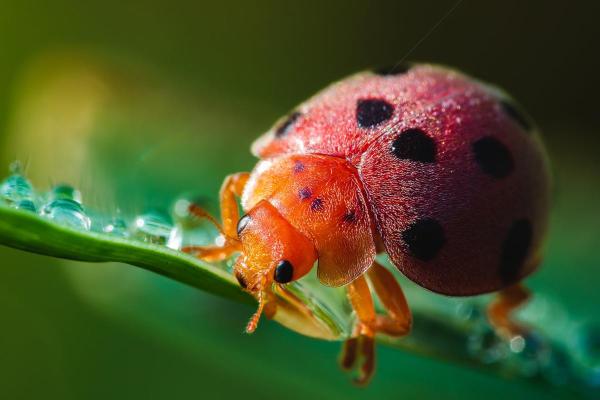
What happens if a ladybug bites you?
In the uncommon event that a ladybug does manage to bite, symptoms are typically minimal and short-lived. You might notice mild redness at the bite site or very minor irritation. These reactions are often so subtle that they're barely noticeable and frequently disappear within an hour or two without any intervention.
More noticeable reactions are usually not from the bite itself, but from the defensive fluid ladybugs can release when threatened. As mentioned, this yellowish secretion contains compounds that might cause skin irritation in sensitive individuals, appearing as small red marks or a mild rash. Even these reactions tend to be localized and temporary.
Even for people with sensitive skin or insect allergies, ladybug bites rarely cause significant reactions. The defensive fluid they secrete is more likely to cause mild irritation than the bite itself, but even these responses are generally not serious and resolve quickly without complications.
Want to know where ladybugs come from? Learn about their life cycle and reproduction in our detailed guide.
Differences between regular ladybugs vs. Asian lady beetles
Native ladybugs and Asian lady beetles (Harmonia axyridis) are often confused for one another, but there are several key differences that can help you tell them apart.
Physical appearance:
Native North American ladybugs (like the nine-spotted ladybug) typically have a bright red or orange coloration with distinct black spots. Their bodies are dome-shaped but slightly smaller and more rounded than their Asian counterparts.
Asian lady beetles display more color variation, ranging from pale yellow-orange to deep red, and their spots can sometimes appear faded or merged together.
The most reliable identifying feature is the distinctive "M" or "W" marking on their pronotum (the area just behind the head), which native species don't have. Asian lady beetles are also typically larger and have a more oval-shaped body compared to native ladybugs.
Behavior and habitat:
Native ladybugs are generally solitary and don't typically gather in large groups. They prefer to overwinter outdoors in protected natural areas like under leaves, in tree bark crevices, or among rocks.
Asian lady beetles are known for their aggregating behavior, especially in fall when they seek warm shelter for overwintering. They often invade homes and buildings in large numbers, becoming a nuisance. They're much more aggressive about entering human structures than native species.
Are Asian lady beetles harmful to humans?
While both species can technically bite, Asian lady beetles are more likely to "pinch" human skin with their mandibles. They're also more aggressive in their defensive responses when disturbed.
Asian lady beetles produce a stronger-smelling defensive secretion that can stain surfaces yellow and cause more significant skin irritation. This secretion also has a more pungent odor than that of native ladybugs. When threatened, Asian lady beetles are more likely to release this fluid, sometimes called "reflex bleeding.

If you want to read similar articles to Do Ladybugs Bite?, we recommend you visit our Facts about the animal kingdom category.
- Animal Diversity Web. (2020). Available at: https://animaldiversity.org/


